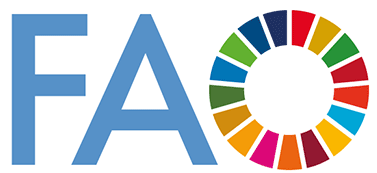Impactos ambientales negativos de la urbanización en la localidad residencial del Río Quevedo, Ecuador
Resumen
Las descargas domésticas, industriales y agrícolas sin tratamiento previo constituyen las principales fuentes de contaminación en el río Quevedo, Ecuador. La investigación tuvo como objetivo diseñar un plan de manejo ambiental que mitigue el impacto negativo de las contaminaciones domésticas, industriales y agrícolas sin previo tratamiento en la localidad residencial en el río Quevedo. Se evaluó la percepción social con enfoque participativo, los principales indicadores socioeconómicos y ambientales que influyen en la calidad del agua. Se valoró la percepción social de los ciudadanos de Quevedo sobre el impacto negativo de la urbanización hacia su recurso hídrico más importante, se empleó el método de encuesta, recopilación de datos, revisión de informes y otros documentos. Se desarrolló una investigación cualitativa, descriptiva y exploratoria para la caracterización de los indicadores socioeconómicos. Los indicadores ambientales se basaron en el componente ambiental agua y la diversidad de fauna acuática, específicamente macroinvertebrados. La percepción social sobre la calidad del agua del río Quevedo indicó la necesidad de auditorías y planes de gestión ambiental para remediar la contaminación de las aguas. Los indicadores físico-químicos y biológicos a partir de las familias de macroinvertebrados presentes, demostraron la contaminación del agua del río Quevedo, ocasionada por las descargas de aguas residuales de la zona urbana, entre otros factores contaminantes. Los impactos negativos derivados de la urbanización representaron el 74.8% sobre el ecosistema del río y el ambiente. Se diseñó un plan de manejo ambiental con 36 medidas correctoras y cuatro mecanismos de compensación de la biodiversidad.
Palabras clave:
Contaminación ambiental, enfoque participativo, impacto ambiental, indicadores ambientales, percepción social.
ABSTRACT
The domestic, industrial and agricultural discharges without previous treatment constitute the main sources of contamination in the Quevedo river, Ecuador. The design a plan of environmental handling to mitigate the negative impact of the domestic, industrial and agricultural contaminations without previous treatment in the residential town in the Quevedo river was carried out. The social perception with participate focus, the main socioeconomic and environmental indicators that influence in the quality of the water were evaluated. In the social perception of the citizens of Quevedo on the negative impact of the urbanization toward their water resource most important, with focus participative, the survey method, summary of data, revision of reports and another documents were used. A qualitative, descriptive and exploratory investigation was used for the characterization of the socioeconomic indicators. The environmental indicators were based on the environmental component water and the diversity of aquatic fauna, specifically macroinvertebrados. The social perception about the quality of the water of the river Quevedo indicated the necessity of audits and plans of environmental administration to remedy the contamination of the waters. The physical-chemical and biological indicators starting from the families of present macroinvertebrados, demonstrated the contamination of the water of the Quevedo river, caused by the discharges of residual waters of the urban area, among other polluting factors. The derived negative impacts of the urbanization represented 74.8% on the ecosystem of the river and the atmosphere. A plan of environmental handling was designed with 36 corrective measured and four mechanisms of biodiversity compensation.Keywords:
Environmental contamination, focus participative, environmental impact, environmental indicators, social perception.Descargas
Publicado
Cómo citar
Número
Sección
Licencia
La editorial "Universo Sur", de la Universidad de Cienfuegos, publica el contenido de la Revista Científica Agroecosistemas bajo una Licencia Creative Commons Atribución-NoComercial-SinDerivar 4.0 Internacional.
© Podrá reproducirse, de forma parcial o total, el contenido de esta publicación, siempre que se haga de forma literal y se mencione la fuente.







